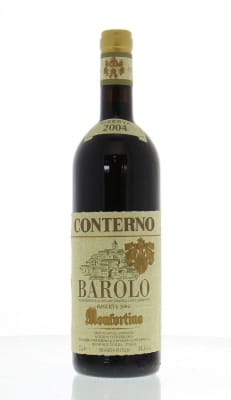Italian Wine
Italy is well known for its magnificient red and white wines, especially Piemonte wine like Barolo and Tuscan wine like Chianti and Brunello. But Italy is also renowned for its more sweet or dry and powerful wines like Amarone and sparkling wines like Prosecco.
The best wines from Italy
Italy is well known for its magnificient red and white wines, especially Piemonte wine like Barolo and Tuscan wine like Chianti and Brunello. But Italy is also renowned for its more sweet or dry and powerful wines like Amarone and sparkling wines like Prosecco.
Italy is the country with the highest wine production worldwide. And ranks third in terms of wine consumption after the United States and France. Italian wine is made from Sicily to the Swiss and Austrian Alps.
Wine has been made in Italy since Greek rule in the Mediterranean, especially in Sicily at that time. In Roman times, it spread further towards the north. Around 150 AD, there were 80 wines known by name within the Roman Empire. Of the 18 wines then internationally known, 11 came from Italy.
After the end of the Roman Empire, due to wars, occupations, lack of land and large landholdings, among other reasons, little work was done on serious winegrowing. Only in the 19th century was it taken up again by winegrowers who saw the potential of Italian wine culture. But here, too, the Phylloxera crisis struck and it was not until the 1960s that the first steps were taken towards the modern development of quality wines through a new wine law.
Grapes in wines from Italy
Italy; the country that, together with Portugal, has the most diverse plantings when it comes to different grape varieties. Worldwide, almost 10,000 different grape varieties are known, of which Italy has more than 500.
The most popular wines are made from the Nebbiolo and the Sangiovese grape. But wines from Barbera, Dolcetto, Malvasia, Montepulciano, Moscatio, Pinot Grigio, Primitivo, Vermentino and even Chardonnay are also well sought after
Wine production in Tuscany
Tuscan wines have a worldwide reputation. Antinori is a world famous Italian winemaker from Tuscany and one of the oldest family-owned wine companies in the world. And Ornellaia is an estate which quickly rose to the top of the so-called Super Tuscan wines. Sassicaia was the first Italian wine to experiment with Bordeaux style wine making and is part of the impressive portfolio of Tenuta San Guido. Le Macchiole is the winery that first had the courage to release 100% Cabernet Franc from Tuscany.
Tuscan wines are mainly red wines. Most wines are made from the sangiovese grape, but there are also Italian red wines from Tuscany produced that are not made from the sangiovese grape. In that case, Bordeaux and Rhone wines grape varieties are used. Some of these wines are high quality wines and are highly sought after, the so called Super Tuscans.
Check all Tuscan wines on the Tuscan wine page.
To select a good Tuscan wine can be a challenge. We can give recommendations based on personal favour and budget. Some of our top selling Tuscan wines are:
Le Macchiole

2017
(Magnum) € 319,00 (ex Vat) € 385,99 (in Vat) more info
Salicutti

2019
€ 84,95 (ex Vat) € 102,79 (in Vat) more info
Mazzei

2021
€ 49,00 (ex Vat) € 59,29 (in Vat) more info
Gaja

2020
(Magnum) € 449,00 (ex Vat) € 543,29 (in Vat) more info
Wine production in Piemonte
Piemonte is known for its Barolo, Barbaresco and Barbera wines. In almost every higher end wineshop or restaurant you will have to opportunity to buy or drink these wines. These wines can be world class.
There are dozens of high quality winemakers in Piemonte and several have a worldwide recognition, like Giacomo Conterno who was one of the first producers to deliberately let the Barolos ferment for a long time and let them mature in large wooden barrels. Another famous Barolo winemaker is Gaja, which produces over 40 different red and white wines, including Grappa (Eau de Vie). Roberto Voerzio, despite for its relatively short period of operations, is one of the most regarded wine producers in Piemonte with a limited number of produced wines yearly. And the focus on sustainability within Piemonte is already there for decades. The Ceretto's family's dedication to sustainability is reflected in the fact that all wines obtained organic certification in the EU in 2015, and many of its vineyards are farmed biodynamically
The Barolo and |Barbaresco wines are the most famous wines from Piemonte, but also Barbera wines may not be underestimated.
Check all Piemonte wines on our Piemonte wine page.
Some of our recommended wines from Piemonte are:
Guido Rivella

2015
€ 74,95 (ex Vat) € 90,69 (in Vat) more info
Giacomo Conterno
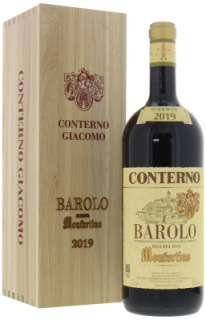
2019
(Magnum) € 1.595,00 (ex Vat) € 1.929,95 (in Vat) more info
Ceretto

2019
€ 89,00 (ex Vat) € 107,69 (in Vat) more info
Vietti

2018
€ 149,00 (ex Vat) € 180,29 (in Vat) more info
Barolo wine producers
Barolo is directly associated with Italy and for good reason. barolo wines are exemplary for the high quality of Italian winemaking. And a Barolo can age for decades. Do you see a Barolo of a renowned winemaker on a winelist 40 years of age? High chance this wine will be at its top.
Famous Barolo and Barbaresco winemakers are numerous. Bruno Giacosa is considered one of the legendary winemakers of the world, having crafted the most prestigious single-vineyard Barolo and Barbaresco wines during his career spanning nearly eight decades. The Burlotto wines are highly regarded this distinguished family history dates back to the 1800s. And besides Barolo, Luigi Oddero also produces high quality Barbera wines. His Barolo La Morra and Barolo Castiglione are well known. And winemaker Vietti is a producer of many different barolos and some really outstanding like the Ravera and Cerequio.
Check for more information about barolo on our Barolo page.
Pico Maccario

2019
€ 98,35 (ex Vat) € 119,00 (in Vat) more info
Ceretto

2020
€ 159,00 (ex Vat) € 192,39 (in Vat) more info
Luigi Oddero

2013
€ 99,00 (ex Vat) € 119,79 (in Vat) more info
Giacomo Conterno
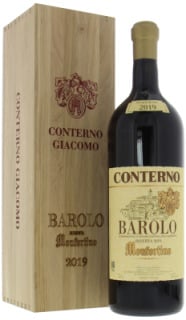
2019
(Double Magnum) € 3.450,00 (ex Vat) € 4.174,50 (in Vat) more info
Barbaresco wine producers
Besides Barolo, its neighbour Barbaresco is of the same quality. Maybe less known, but wine lovers all over the world are vlooking for rare high end Barbaresco wines.
Many wine producers which make Barolo also offer Barbaresco wines like La Spinetta. Check for more information about barbaresco on our Barbaresco page.
Nada Fiorenzo

2018
€ 59,95 (ex Vat) € 72,54 (in Vat) more info
Gaja

2021
€ 699,00 (ex Vat) € 845,79 (in Vat) more info
Guido Rivella

2017
€ 65,00 (ex Vat) € 78,65 (in Vat) more info
Gaja

2022
€ 624,00 (ex Vat) € 755,04 (in Vat) more info
Brunello di Montalcino wine producers
As famous as Barolo: Brunello di Montalcino wine from the Montalcino region is exclusively made from from the sangiovese grape,
Brunello wines are made by some very small boutique wineries to large worldwide operating companies. And from relatively recently started winemakers to winemakers which have a history of 50 years or more like Biondi Santi with its gorgeous and aromatic Biondi Santi Brunello di Montalcino Riserva. The much smaller winemaker Soldera is known for its beautiful Brunellos, but unfortuntaly also for its loss of 6 vintages, because of vandalism. Worldwide operating Banfi is located in the heart ot Tuscany and produces a series of Brunello wines, with some exceptional high price-quality Riserva wines. And Casanova di Neri is known for its famolus 100 point scoring Cerretalto wines.
Check for more information about Brunello on our Brunello page.
Soldera

1999
€ 1.195,00 (ex Vat) € 1.445,95 (in Vat) more info
Tenuta Fanti
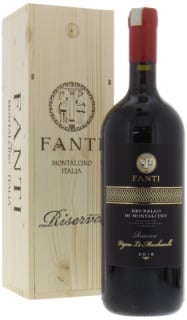
2016
(Magnum) € 129,95 (ex Vat) € 157,24 (in Vat) more info
Máté

2018
€ 54,50 (ex Vat) € 65,95 (in Vat) more info
Salicutti

2020
€ 84,95 (ex Vat) € 102,79 (in Vat) more info
Chianti wine producers
Maybe one of the oldest brands of wine from Italy, dating back to almost 1000 years ago. Chianti has had its up and downs in quality and fame, but the last decades its star has risen again and now stands out for its high quality wines. A chianti is a well protected wine brand and must contain at least 75% Sangiovese.
Besides the evolution of Chianti as a wine, winemakers also adapt quickly to the changing markets. Querciabella's expansion across Chianti Classico has been gradual, with each site surrounded by oak forests and olive groves. Caggio produces its high scoring and rare Ipsus Chianti Classico and is the flagship of this remarkable wine estate. Castello di Ama, is famous for its L'Apparita Chianti wines which always scores very high in blind tastings.
Check for more information about Chianti on our Chianti page.
Caggio

2018
€ 275,00 (ex Vat) € 332,75 (in Vat) more info
Agricole Querciabella

2017
€ 26,95 (ex Vat) € 32,61 (in Vat) more info
Fontodi

2020
€ 29,95 (ex Vat) € 36,24 (in Vat) more info
Caggio
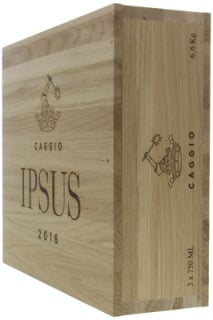
2016
(OWC of 3 bottles) € 750,00 (ex Vat) € 907,50 (in Vat) more info
Abruzzo wine producers
Abruzzo is a region with on the east coast the Adriatic Sea and the Apennine mountain range in the west. The region is famous for It’s use of the Montepulciano variety, which is not to be confused with the Vino Nobile di Montepulciano DOCG from the town Montepulciano in Tuscany, other commonly used varieties are the Trebbiano and Pecorino.
Some great examples from the Abruzzo are Emidio Pepe with it’s DOCG Montepulciano d’Abruzzo Colline Teramane and Valentini wines.
For more wines from Abruzzo see our Abruzzo wine page.
Emidio Pepe

2022
€ 54,95 (ex Vat) € 66,49 (in Vat) more info
Valentini

2015
€ 219,00 (ex Vat) € 264,99 (in Vat) more info
Emidio Pepe

2024
€ 54,95 (ex Vat) € 66,49 (in Vat) more info
Emidio Pepe

2022
€ 59,95 (ex Vat) € 72,54 (in Vat) more info
Prosecco wine producers
Italy is well known for its red and white wines, but for any sparkling wine lover the Prosecco wines from Veneto are nothing new. While Prosecco is one of the most well known sparkling wines or as the Italians call it spumante, there are many producers across the country who produce some great spumante wines. To name a few, Ca’ del Bosco, Marchese Antinori Montenisa, Fratelli Lunelli Ferrari.
While historically being known for being a cheaper alternative to Champagne, many producers have greatly improved their production and viticultural techniques and adapted the ‘methode traditionelle’ as is the method used in the Champagne region, producing new distinctive sparkling wines which are a treat to all who enjoy a glass of bubbly.
For more information about Prosecco view our Prosecco page.
Amarone wine producers
Amarone wines are a breed apart and unique in the world, produced in the Veneto and Valpolicella wine region. The method of winemaking is something special and called 'appassimento' which means whithering or drying out. Then the wine is aged in casks for two to five years, depending on the quality level.
Some well known producers of Amarone wines are Dal Forno, its Lodoletta Amarone is well sought after. The range of Amarone wines varies from straightforward to very exclusive Riserva wines. Quintarelli produces exclusive and rare Amarones and Riserva Amarone. Quintarelli also produces a Cabernet Sauvignon, Cabernet Franc and Merlot belnd wine, the Rosso del Bepi and the white Bianco Secco and Amabile del Cere. The Tommasi family runned Amarone winemaker is more well known as it produces larger quantities of Amarone.
Check for more information about Amarone on our Amarone page.
Dal Forno

2012
€ 279,00 (ex Vat) € 337,59 (in Vat) more info
Tedeschi
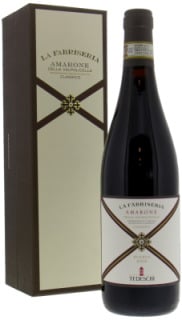
2015
€ 143,00 (ex Vat) € 173,03 (in Vat) more info
Zyme

2009
€ 225,00 (ex Vat) € 272,25 (in Vat) more info
Dal Forno

2017
€ 269,00 (ex Vat) € 325,49 (in Vat) more info

Italian wine and food pairing
To complete a culinary evening, it is of course important that the wines and the dishes match. A combination can match or complement each other. The wine and the dish should never overrule each other.
Often the saying what grows together, goes together goes well. Truffle and Barolo are a match made in heaven for a reason. A truffle pasta and a good glass of Barolo together make a winning duo.
What also goes well together is Amarone della Valpolicella with Parmigiano Reggiano (Parmesan cheese). The spicy and salty flavour of this hard cheese goes well with the full-bodied character of this wine.
White Italian wines, for example made from vermentino or chardonnay, go well with fresh fish, among other things. It depends on the sauce and garnish whether you go for a wood-aged white wine or a fresh wine.
White fish with butter sauce? Then go for the full-bodied white wine. Instead, is it a fresh and spicy dish with smoked salmon? Then opt for a sauvignon blanc.
In short, there are endless combinations. That is why we at Best of Wines are happy to give wine-food advice on our wines.
We have tasted almost all the wines and therefore know how to give appropriate advice.
Legendary wines from Italy
To become a legendary wine, a wine must be highly rated, must be appreciated by many wine lovers, must be rare and much sought after and lastly: the wine must be several decades old and preferably still drinkable. As many high quality Italian wines ages gracefully and long term, there are many legendary Italian wines.
The classifications of Italian wines
In Italy, wine is divided into four categories:
- Denominazione di origine controllata e garantita (DOCG). The highest qualification for wines from Italy. This is subject to the strictest requirements.
- Denominazione di origine controllata (DOC). The requirements for these wines are slightly less stringent than for DOCG.
- Vino di Tavola. Similar to the French hallmark Vin de Table.
- Indicazione geografica tipica (IGT). In some regions in Italy, especially Tuscany, wonderful results were achieved in the 1970s, 80s and 90s with grape varieties and techniques that did not comply with prescribed rules. Examples include the Super Tuscans (including Masseto, Sassicaia, Ornellaia, Solaia). As some producers found the regulations too rigid and thus did not want to comply with them, their wines were therefore not labelled DOC(G) but Vino di Tavola. As these wines were of a very high standard, often with a clearly defined area of origin, this new category was added. Thus, these wines can be distinguished from the numerous simple and cheap table wines.
- Piemonte is the only region in the country that has no IGT wines. Each wine has a DOC or DOCG status. IGT, DOC and DOCG are part of the quality classification, also known as designation of origin. There are rules and requirements attached to each classification that must be met in order to use that label. DOC stands for a protected geographical indication and DOCG indicates that the provenance is both protected and guaranteed. The latter is therefore the highest quality category.





